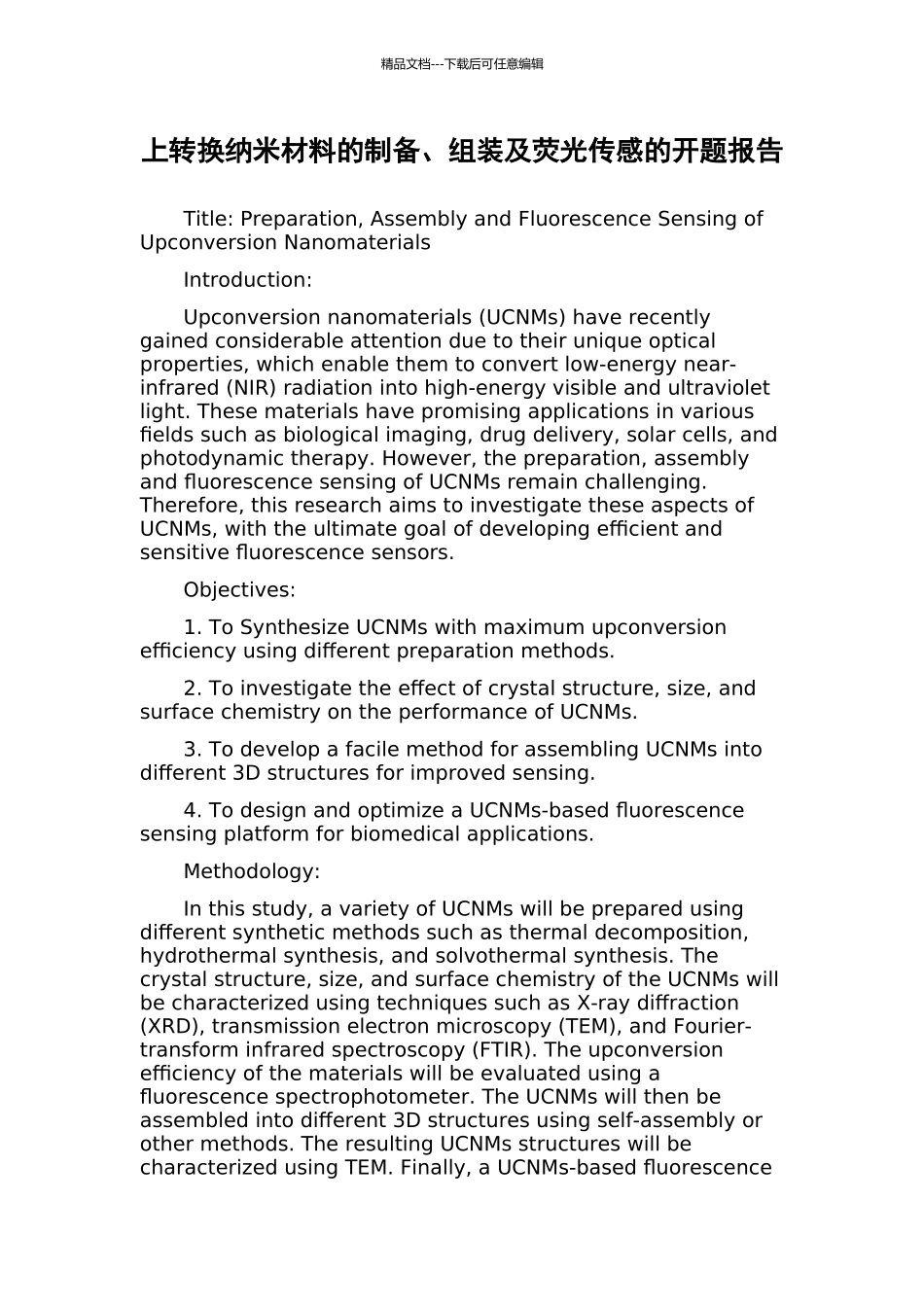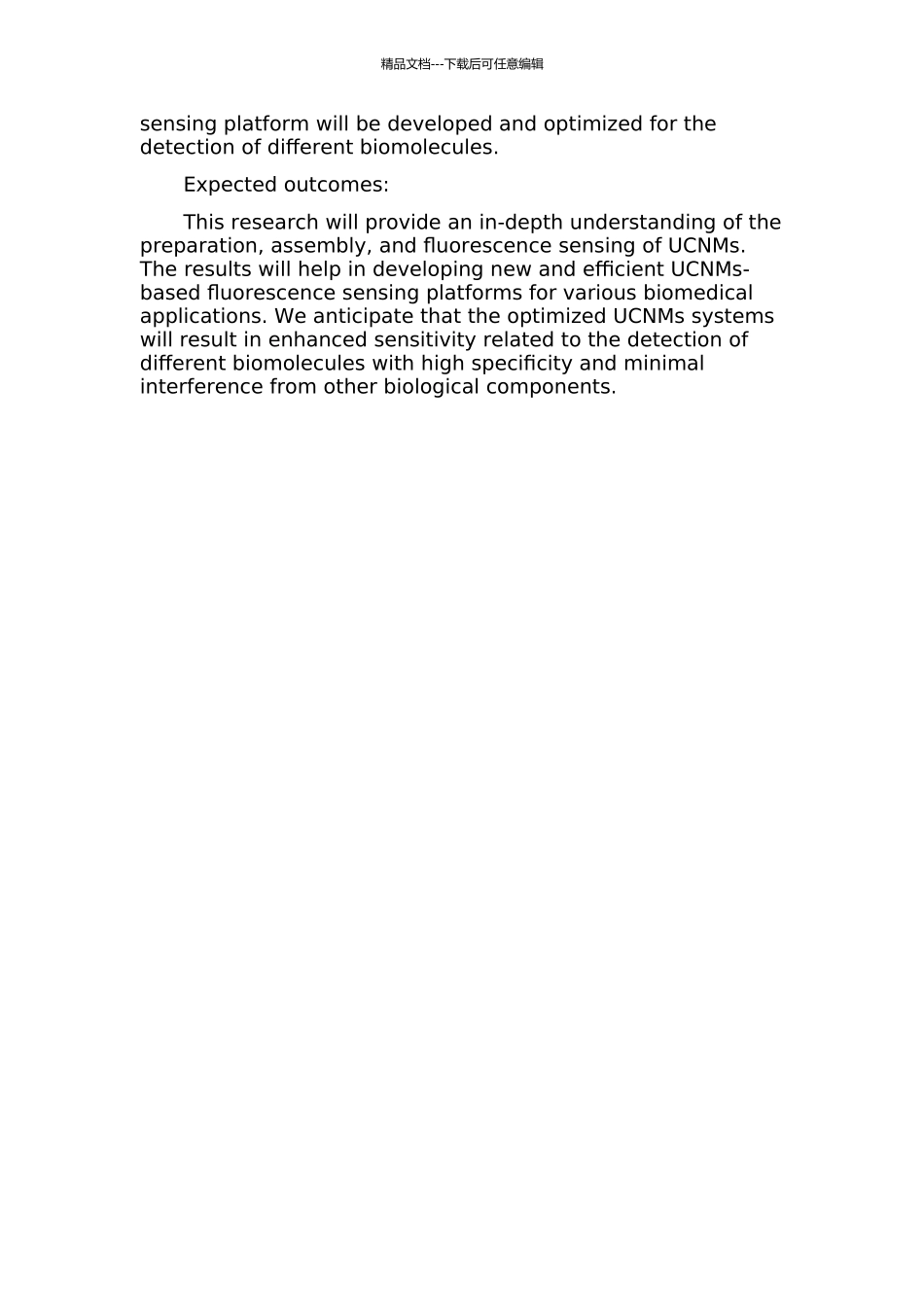精品文档---下载后可任意编辑上转换纳米材料的制备、组装及荧光传感的开题报告Title: Preparation, Assembly and Fluorescence Sensing of Upconversion NanomaterialsIntroduction:Upconversion nanomaterials (UCNMs) have recently gained considerable attention due to their unique optical properties, which enable them to convert low-energy near-infrared (NIR) radiation into high-energy visible and ultraviolet light. These materials have promising applications in various fields such as biological imaging, drug delivery, solar cells, and photodynamic therapy. However, the preparation, assembly and fluorescence sensing of UCNMs remain challenging. Therefore, this research aims to investigate these aspects of UCNMs, with the ultimate goal of developing efficient and sensitive fluorescence sensors.Objectives:1. To Synthesize UCNMs with maximum upconversion efficiency using different preparation methods.2. To investigate the effect of crystal structure, size, and surface chemistry on the performance of UCNMs.3. To develop a facile method for assembling UCNMs into different 3D structures for improved sensing.4. To design and optimize a UCNMs-based fluorescence sensing platform for biomedical applications.Methodology:In this study, a variety of UCNMs will be prepared using different synthetic methods such as thermal decomposition, hydrothermal synthesis, and solvothermal synthesis. The crystal structure, size, and surface chemistry of the UCNMs will be characterized using techniques such as X-ray diffraction (XRD), transmission electron microscopy (TEM), and Fourier-transform infrared spectroscopy (FTIR). The upconversion efficiency of the materials will be evaluated using a fluorescence spectrophotometer. The UCNMs will then be assembled into different 3D structures using self-assembly or other methods. The resulting UCNMs structures will be characterized using TEM. Finally, a UCNMs-based fluorescence 精品文档---下载后可任意编辑sensing platform will be developed and optimized for the detection of different biomolecules.Expected outcomes:This research will provide an in-depth understanding of the preparation, assembly, and fluorescence sensing of UCNMs. The results will help in developing new and efficient UCNMs-based fluorescence sensing platforms for various biomedical applications. We anticipate that the optimized UCNMs systems will result in enhanced sensitivity related to the detection of different biomolecules with high specificity and minimal interference from other biological components.

